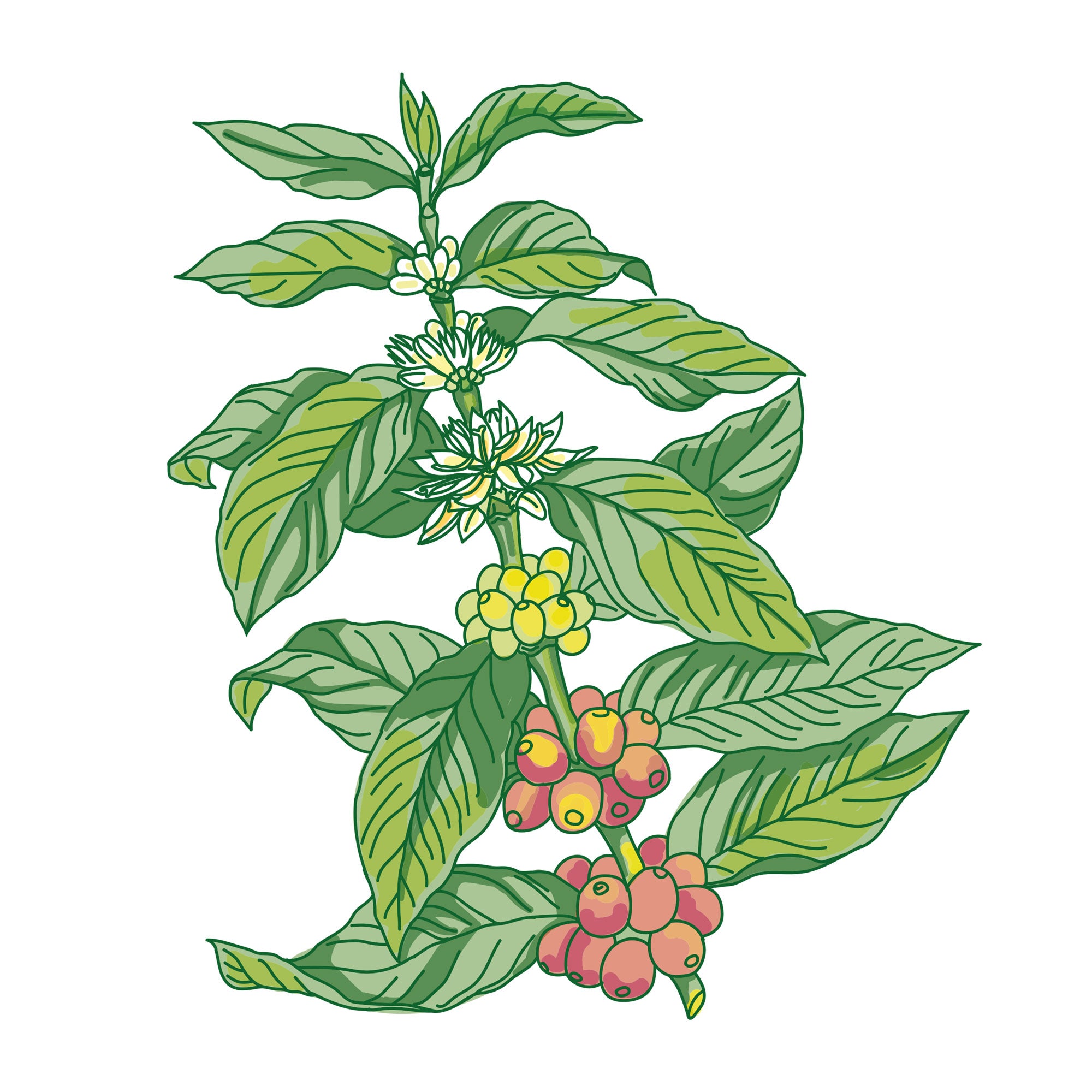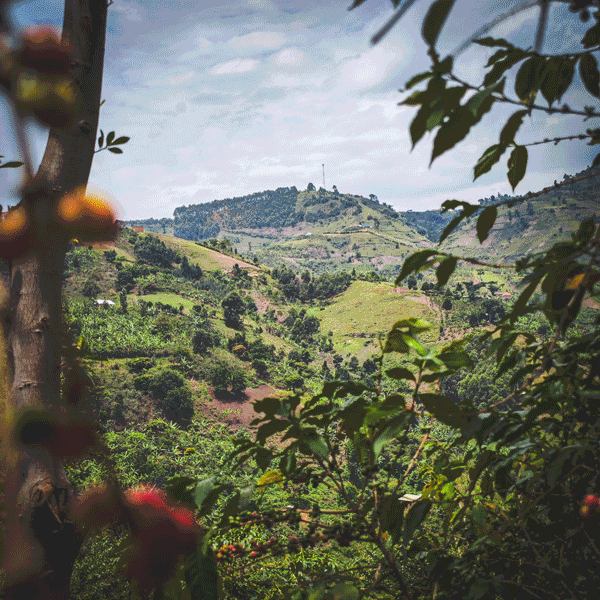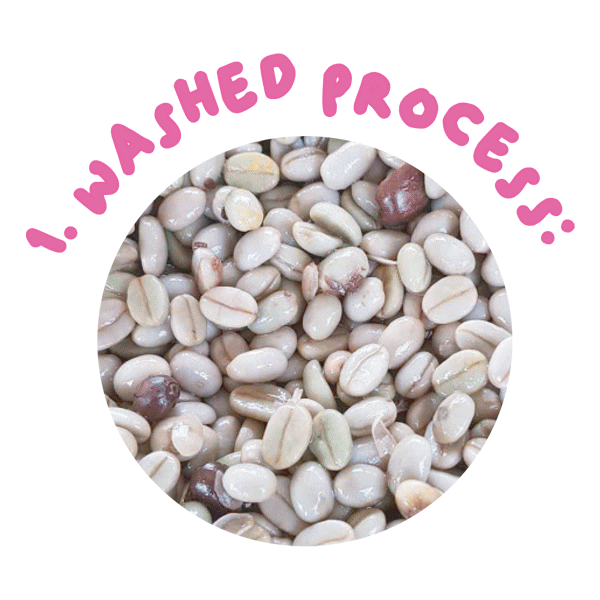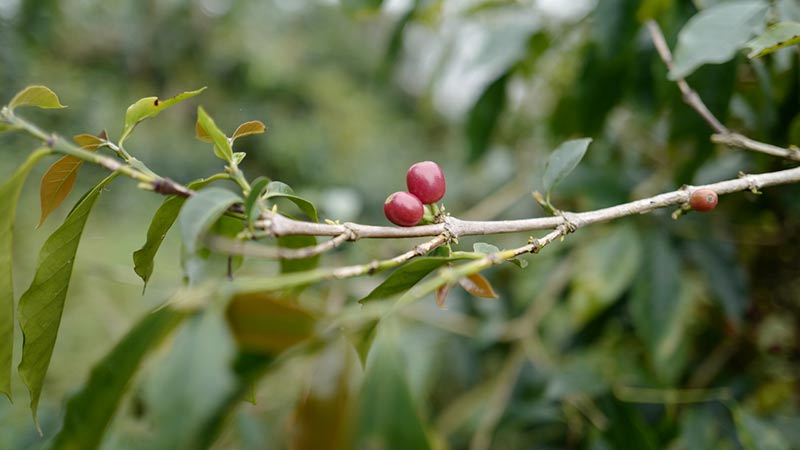JOURNAL | The Anatomy of a Coffee Cherry

SEPTEMBER 2023 | Written by Sara Steele
Behind every cup of aromatic coffee lies a secret marvel of nature — the coffee cherry. This small, vibrant fruit is the very essence of the coffee experience, encapsulating flavour, aroma, and complexity in every delectable sip. Let’s dive into the fascinating anatomy of a coffee cherry and uncover the hidden wonders that make it the heart and soul of our beloved beverage.
The coffee cherry, scientifically known as Coffee, belongs to the Rubiaceae family. The coffee cherry starts its journey as a blossom on a coffee tree, its fragrance filling the air, promising the birth of a new coffee bean. As the days go by, the flowers give way to small, green cherries, gradually maturing into a spectrum of magnificent colours: red, yellow, or even orange, depending on the coffee variety.

1. Externally, the coffee cherry exhibits a smooth, glossy skin, the exocarp, delicately protecting the precious seed nestled within. This outer layer plays a crucial role in safeguarding the bean from external factors such as pests, diseases, and climatic variances. The cherry’s ripeness is carefully observed by skilled farmers, who rely on their experience to determine the optimal time for harvest.
2. Peeling back the layers, we discover the mesocarp—the pulp of the coffee cherry. This pulpy layer is sweet and succulent, often reminiscent of tropical fruits, and contributes significantly to the coffee’s flavour profile. As the coffee cherry matures, the sugars within the mesocarp increase, imparting unique notes that range from citrusy and floral to berry-like and caramel.
3. At the centre of the coffee cherry lies the parchment, also referred to as the endocarp—a thin, protective layer surrounding the bean. This parchment accounts for a small fraction of the cherry’s overall composition, ensuring that the bean remains intact until it’s time for processing. Its presence is critical in shielding the coffee bean from external moisture, preserving its freshness and quality.
4. The mucilage, also known as the pulp, is a sticky and gelatinous substance that envelops the coffee bean. This viscous layer serves as a protective barrier, shielding the bean from potential harm while it undergoes its final stages of maturation. The mucilage is filled with natural sugars, contributing to the overall sweetness and body of the coffee. It also acts as a catalyst during the fermentation process, impacting the depth and nuance of flavours that develop later during processing.
5. As we delve even deeper into the anatomy of the coffee cherry, we come across the silver skin or the spermoderm. This thin and delicate layer intimately adheres to the surface of the coffee bean. It consists of a silver-coloured membrane that encases the embryo, providing it with vital nutrients and protection during growth. Although the silver skin is removed during roasting, its presence influences the final cup by adding subtle nuances and depth to the brew’s body and flavour.
6. At the heart of the coffee bean lies the embryo—an essential part often referred to as the “coffee seed.” The embryo is the living core of the coffee bean, harbouring the potential for new life. It is known as the plant’s reproductive unit, nurturing potential coffee trees and carrying within it the genetic blueprint that determines distinctive coffee flavours. The health, vigour, and genetic traits of the embryo profoundly impact the quality and potential of the coffee bean.
7. Finally, nestled deep within the parchment, we encounter the star of the show—the coffee bean, endosperm. Each coffee cherry typically contains two beans, flat on one side and convex on the other, meticulously developed and packed with potential. These beans hold the essence of that distinct coffee flavour we crave, influenced by the varietal, terroir, and specific processing methods employed after harvest.







